A trip to Lisbon in late April with my mother happened to coincide with the 50th anniversary of the peaceful end of Portugal’s military dictatorship, commemorated on the 25th of April. We noticed vibrant red flowers, specifically carnations, everywhere: in bouquets, attached to a lapel, tucked into a pocket, woven into a hairstyle. People’s faces were bright, joyful, prideful. Much in the city shut down by late afternoon, with crowds filling the major streets and plazas as an epic parade made its way down Avenida da Liberdade (“Liberty Avenue”). It felt special to witness this national celebration and appreciation during our visit.

Some notes and highlights from a few kid-free days in Lisbon:
- Lisbon is quite hilly and steep, so get ready for a lot of walking. There are even escalators built in to some of the steepest inclines! In this sense it was much better to visit without kids, as I certainly would not describe the city as small child- or stroller-friendly. Although there is public transit (a metro system, streetcars, some funiculars), the neighborhoods where most of the accommodations are located (Chiado, Bairro Alto, Alfama) do not have the easiest access. Fortunately taxis and Ubers somehow still seem to reach these streets and are very reasonable, particularly for travel to/from the airport.



- Lisbon is known for many iconic viewpoints (miraduoros) so make sure you get to some of them, such as Miradouro do Chão do Loureiro, Miradouro da Graça, Miradouro do Recolhimento (this one has one of the few playgrounds I spotted in Lisbon). Several have adjacent cafes and restaurants and with good weather, can be a lovely spot to relax and enjoy the expansive views.




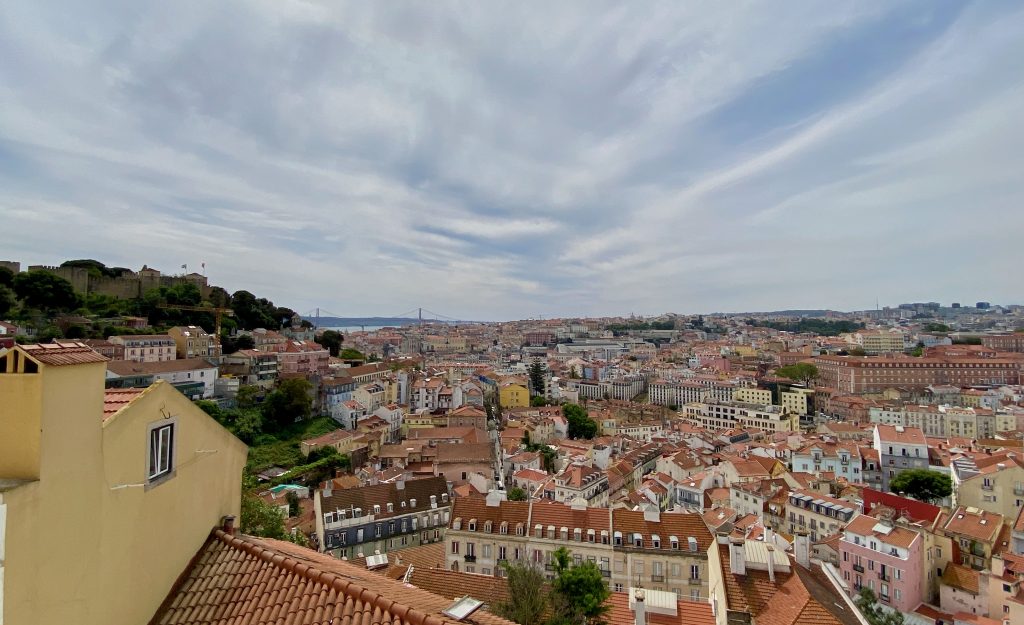
- Alfama Walking Tour: We signed up for Discover Lisbon’s Alfama tour and the guide Francisco (Chico) was funny, knowledgeable, and engaging. It starts at Rossio Square and for about 2.5 hours you get to tour many of the key sites and learn a lot about the thousands of years of history and development of this remarkable city. For example, a devastating earthquake in the mid-18th century and resulting tsunami destroyed nearly everything in the “old city,” and so many of the buildings we view today are much newer than they appear. As in Spain, it’s impossible to visit these cities throughout the Iberian Peninsula without noting the centuries of persecution of Jews there (as marked in one of the monuments we encountered on the tour). Afterwards, we had a lively lunch with Chico and a few other guests from the tour afterwards at Restaurante O Portas, Chico’s favorite spot, with locals eating classic Portuguese dishes in big portions.

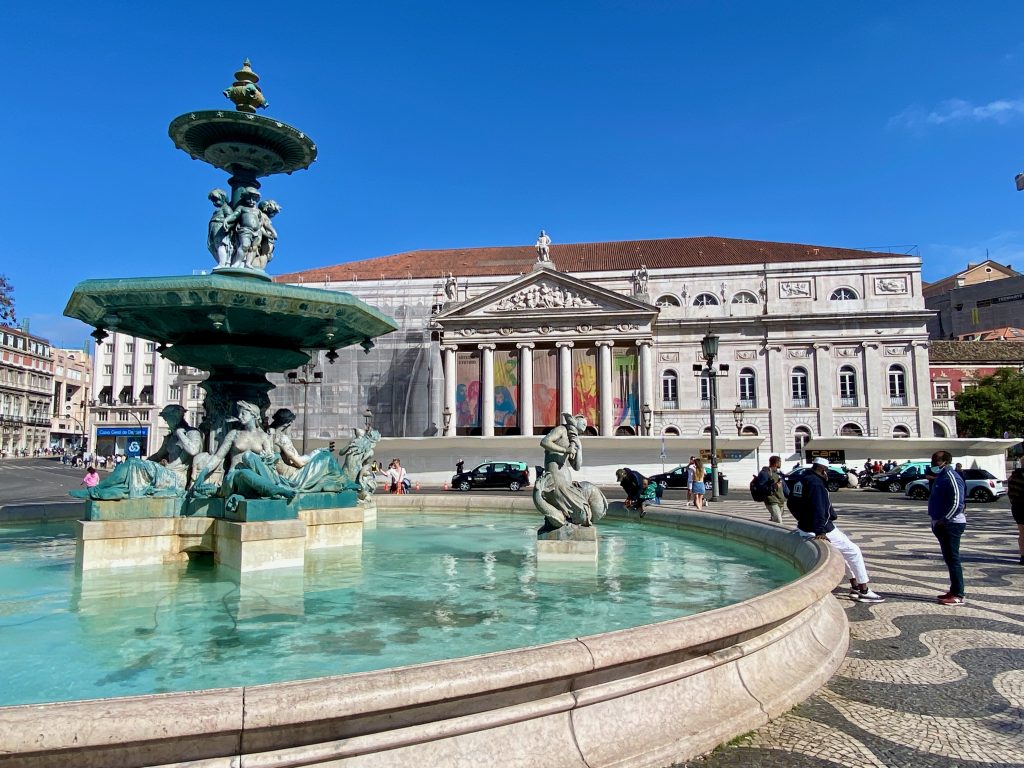






- Portuguese Wine Tasting – We enjoyed this Portuguese wine tasting experience with a local sommelier, Joao, which featured very high quality wines and was quite fun and informative.


- Restaurants: We stumbled upon this lovely restaurant, Folha Bistro, in the Mouraira neighborhood with chic decor and an excellent vegetarian-leaning menu. We also enjoyed a lively, interesting small plates-style dinner at Taberna Bairro Avillez (need to make a reservation in advance for any spots in Jose Avillez’s family of restaurants). The Time Out Market is known as a more touristy food hall but is a convenient forum to taste a variety of Portuguese specialties in a cool environment. Other restaurant recommendations we received via the local experiences were Gambrinus, Solar dos Presuntos, and A Licorista e O Bacalhoeiro.




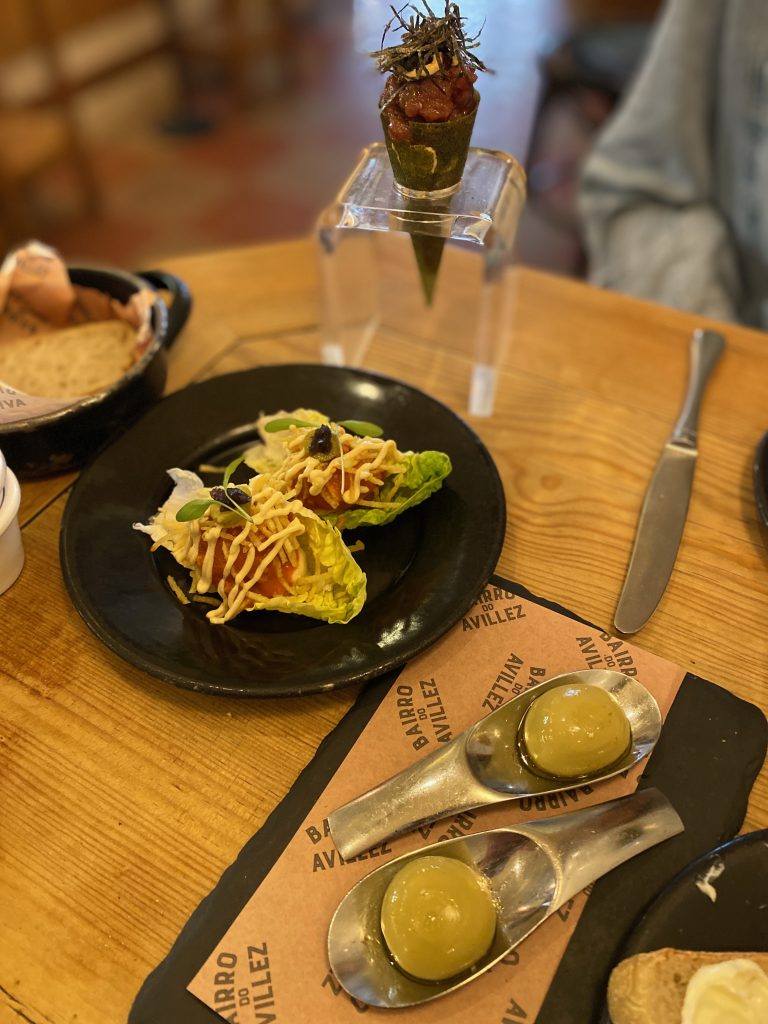
I was last in Lisbon in 2018 on a gallivanting tour of Portugal and Spain with Dave and our friends Jill and Josh; photos of our day trip to Sintra six years ago were just as cloudy as the ones we took on this recent trip (Sintra’s weather continues to be notoriously temperamental).


And six years later, back at Palacio de Pena in Sintra:


A few notes on the day trip to Sintra, Lisbon’s nearby coastal retreat with summer palaces, gardens, and castles. You can go on your own via the train from Rossio station (but there’s a lot of steep/uphill walking and public transport within Sintra to figure out) or you can join a pre-planned, guided group tour via bus transport (I recommend the latter as they handle all the logistics and you have the benefit of a knowledgeable guide getting you past the long lines – we did this one via Get Your Guide). Quinta de Regaleira, Palacio de Pena, and Castelo dos Mouros are the main attractions in Sintra. The tour was very good but did not include Castelo dos Mouros, which is really worth visiting if you’re able to find a packaged tour offering all three attractions in one day trip. I also did not find Cascais to be very interesting or remarkable as a beach town.
I did not get to visit Regaleira on our 2018 trip to Sintra and it is really one of Portugal’s gems. Although there is a castle on the property, it’s mainly a Romantic era-inspired garden on sprawling grounds with many surprising and delightful features such as grottos, caves, waterfalls, and showcasing a more minimalist, naturalist orientation to garden design and maintenance (versus Versailles, for example); you could certainly spend several hours wandering and relaxing in this enchanted space.





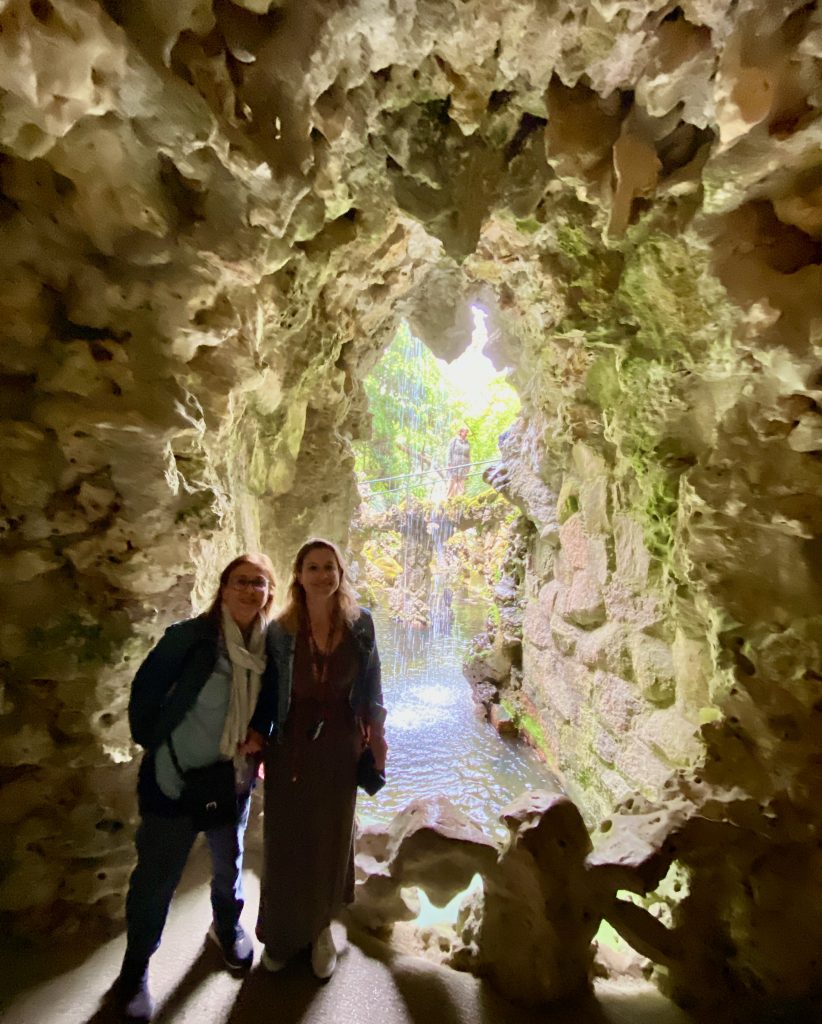



Palacio de Pena was the summer, private home of royals Ferdinand and Maria from the early 19th century. This was meant to be a pleasure palace, a gift of love from king to queen, showcasing a passion for art collection. Since it was built in a former monastery, it’s interesting to note some of those features which were maintained, as well as the Moorish influences and history.



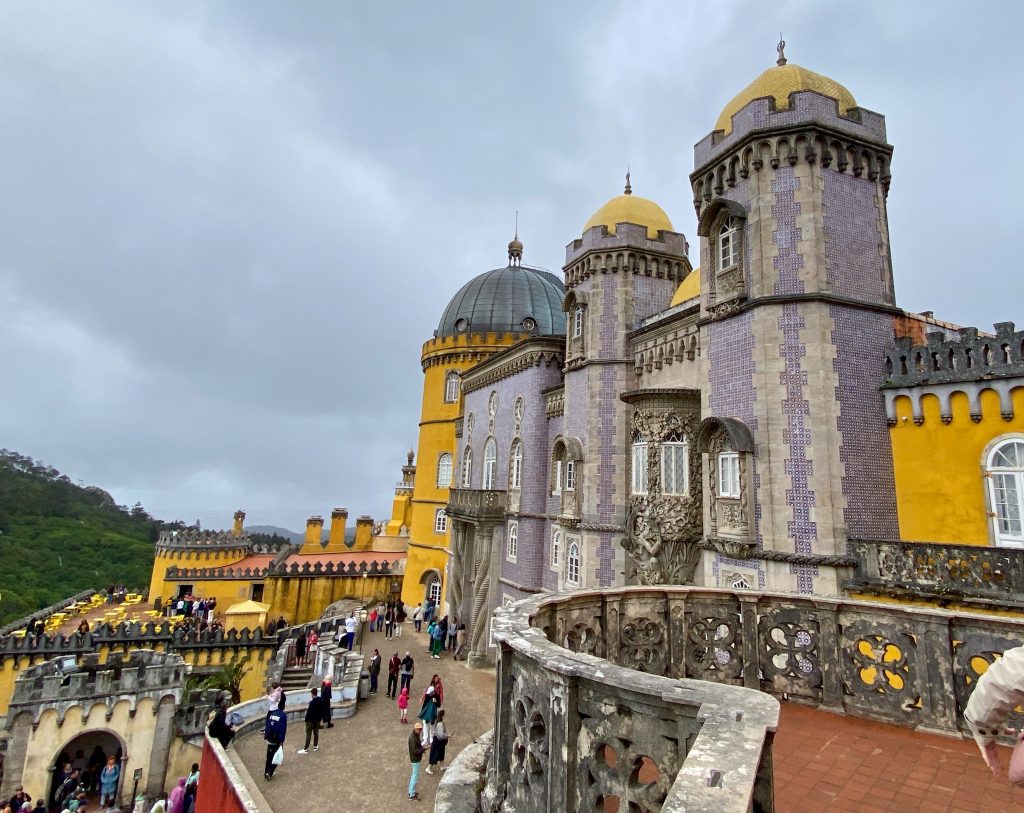


Even in late April, Sintra was packed with tourists; our guide confirmed that it remains quite crowded from the spring through early fall. You need to book advanced tickets to any of the palaces/sites in Sintra if you do not do a group tour.
With just 2.5 days in Lisbon on this trip, I was still reminded me of how scenic, vibrant, and diverse the city is and how much there is to enjoy on a return visit, along with the quality time of this mother-daughter trip.



